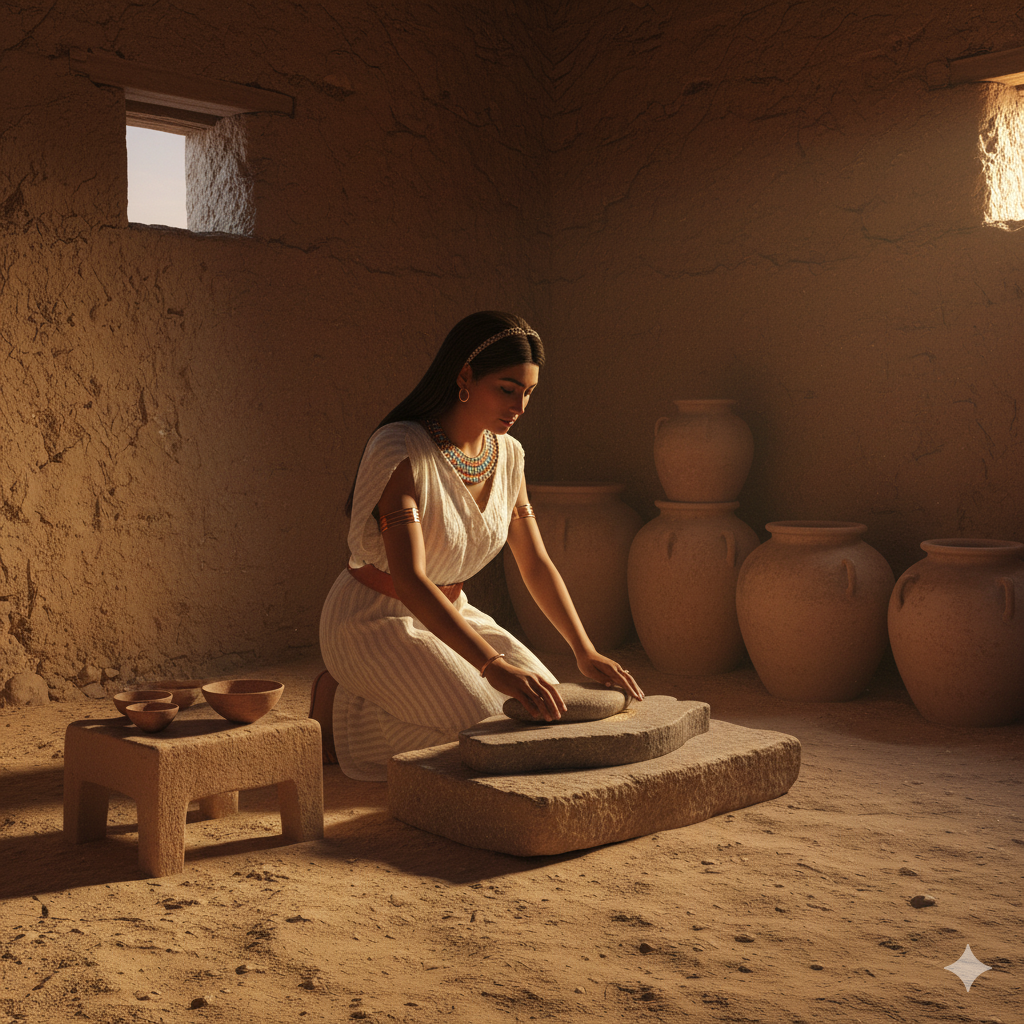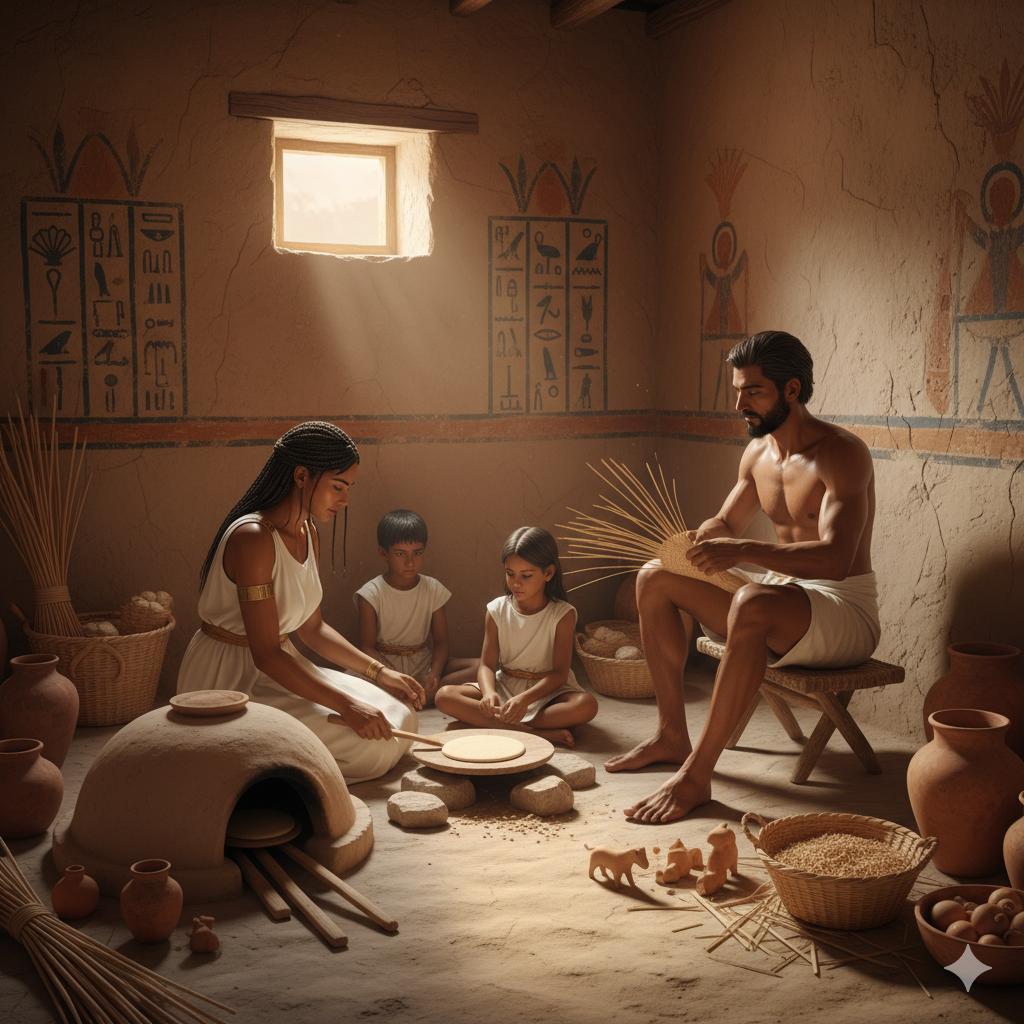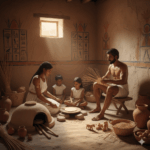A Glimpse Behind the Mudbrick Walls
When we think of ancient Egypt, we often imagine colossal temples and golden tombs — but behind those monuments lay a quieter world: the humble homes where families lived, laughed, and worked.The story of ancient Egyptian family life is a story of love, faith, and resilience built along the life-giving Nile.

The Egyptian Home: A Haven by the Nile
Most Egyptians lived in mudbrick houses, built to keep out the desert heat.Farmers and workers had modest one- or two-room homes with flat roofs where they might sleep on hot nights.Wealthier families enjoyed multi-room dwellings with courtyards, kitchens, and small shrines to household gods.Furniture was simple but functional — low stools, woven mats, reed baskets, and pottery jars. Yet, these homes were full of life: the scent of baking bread, the sound of children, and the rhythm of daily chores.
Family Structure and Roles
Family was the cornerstone of Egyptian society.
The father was typically the head of the household, responsible for work and protection.
The mother managed domestic life — cooking, weaving, caring for children, and often running small household businesses.
Children were treasured, and family bonds were strong; love and respect were deeply valued virtues.
Marriage was not a religious act but a social contract — and affection between couples is often recorded in love poems and tomb inscriptions.
Women in the Heart of the Home

Ancient Egyptian women enjoyed more rights than their counterparts in most ancient civilizations.They could own property, run businesses, inherit wealth, and initiate divorce.In both art and writing, women are depicted as equals in affection and partnership — a reflection of their central role in family and community life.
Meals, Work, and Daily Routine
Each morning began with the rising sun — a sacred rhythm mirrored in the workday:The father might go to the fields, workshop, or temple.The mother ground grain, baked bread, and tended to the garden.Children helped, played, or learned trades from their parents.Meals were simple but nourishing: bread, beer, onions, fish, and sometimes meat or fruit for festivals.Food preparation took time, but it was also a family ritual, bringing everyone together.
Faith and Domestic Spirituality
Spiritual life was not confined to temples. Many homes had small altars or niches where offerings were made to household gods like Bes (protector of families) and Taweret (goddess of childbirth).These beliefs gave comfort and hope in a world shaped by the rhythms of the Nile and the cycle of life and death.
Archaeological Glimpses of Everyday Life
Excavations at places like Deir el-Medina, the village of royal tomb builders, have provided vivid insights into family life:letters between spouses, love songs, and drawings on ostraca that show humor, affection, and ordinary concerns — all proof that ancient Egyptians were people much like us.
Legacy: Humanity Across Millennia
The walls of temples tell us about kings — but the homes of ordinary Egyptians tell us about humanity.Their laughter, their struggles, and their love for family echo across thousands of years, reminding us that the heart of Egypt was always its people.







Leave a Reply